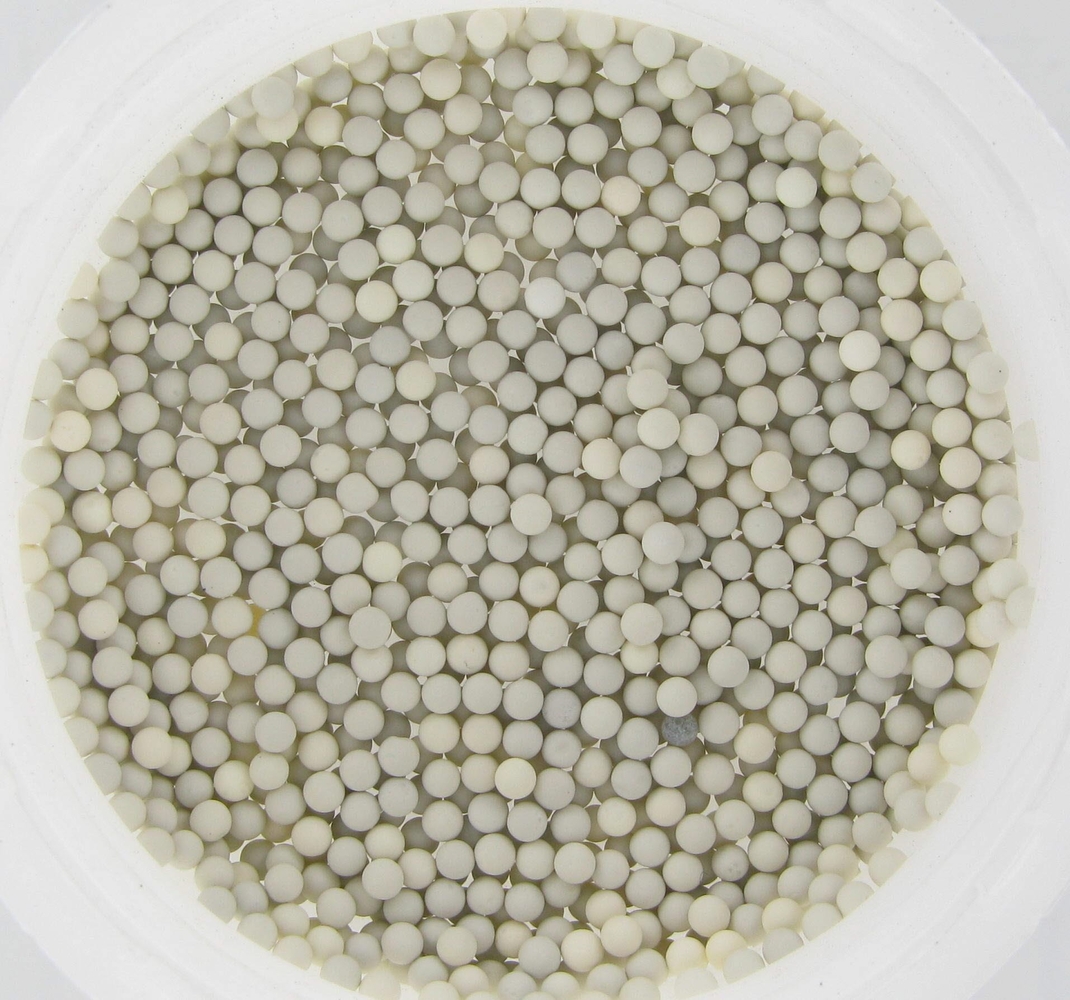
Axens Offer
With over 170 commercial references, the Symphony® catalysts offers advantages, such as improved specific surface area retention.

Higher specific surface area is associated with improved regeneration (Pt re-dispersion) and better chloride retention. Consequently, the new catalysts exhibit longer catalyst life, reduced salt deposits in downstream units and lower chloride content in the hydrogen rich gas, resulting in longer chloride trap life, and lower green oil formation.
Axens CCR Reforming Catalysts

Axens Fixed Bed Reforming Catalysts

Gasoline Production
Reforming catalysts developed to produce high-octane gasoline.
Symphony® PS 100
Symphony® PS 100 offers very high selectivity producing maximum C5+ and hydrogen yield. It offers superior hydrothermal stability.
Symphony® PS 110
Symphony® PS 110 offers very high selectivity producing maximum C5+ and hydrogen yield. It offers the highest activity and lowest fine make.
Symphony® CR 157
Symphony® CR 157 relies on an enhanced and optimized alumina carrier to more effectively upgrade naphtha into high-octane reformate, hydrogen and aromatics.
Aromatics Production
Reforming catalysts developed to maximize aromatics production from naphtha.
Symphony® AR 151
Symphony® AR 151 has industry leading hydrothermal stability and attrition resistance. It offers high yield and the lowest coke make.
Semi-Regenerative Reforming
Semi-Regenerative reformer target is to produce an high octane stream for gasoline production but also aromatics for petrochemical application and high purity hydrogen used by other refinery processes. Typically semi regenerative units consist of 3 to 4 reactors, the regeneration is performed for all reactors at the same time leading to periodic unit shutdown.
Symphony® PR 150
Symphony® Reforming catalyst family uses an enhanced and optimized alumina carrier to more effectively upgrade naphtha into high-octane reformate, hydrogen and aromatics. Thanks to its balanced formulation, Symphony® PR 150 is the catalyst of choice for cyclic operation and units having quite high sulfur content on the feed.
Symphony® PR 156
Symphony® Reforming catalyst family uses an enhanced and optimized alumina carrier to more effectively upgrade naphtha into high-octane reformate, hydrogen and aromatics. Thanks to its unbalanced formulation Symphony® PR 156 is the catalyst of choice for semi regenerative unit providing maximum cycle length.
RG 682
RG 682 assures the optimum interaction between promoter, platinum and rhenium. It procures an increase of C5+ and H2 in addition to an extended cycle length as a consequence of a drastic increase of activity and stability.
Symphony® PR 250
Symphony® Reforming catalyst family uses an enhanced and optimized alumina carrier to more effectively upgrade naphtha into high-octane reformate, hydrogen and aromatics. Thanks to its balanced formulation, Symphony® PR 250 is the catalyst of choice for cyclic operation and units having quite high sulfur content on the feed. PR 250 offers versus PR 150, linked to optimization of the catalytic formulation, improvement in activity and cycle length ensuring improved economic.
Symphony® PR 256
Symphony® Reforming catalyst family uses an enhanced and optimized alumina carrier to more effectively upgrade naphtha into high-octane reformate, hydrogen and aromatics. PR 256 offers versus PR 156, linked to optimization of the catalytic formulation, improvement in activity and cycle length ensuring improved economic.
Cyclic Reforming
Cyclic reformer target is to produce an high octane stream for gasoline production but also aromatics for petrochemical application and high purity hydrogen used by other refinery processes. Typically cyclic reformer units consist of 4 to 5 reactors, while 3 to 4 reactors are on stream one reactor is regenerated. The unit is therefore able to operate on a continuous basis.
Symphony® PR 150
Symphony® Reforming catalyst family uses an enhanced and optimized alumina carrier to more effectively upgrade naphtha into high-octane reformate, hydrogen and aromatics. Thanks to its balanced formulation, Symphony® PR 150 is the catalyst of choice for cyclic operation and units having quite high sulfur content on the feed.
Symphony® P 152
Symphony® Reforming catalyst family uses an enhanced and optimized alumina carrier to more effectively upgrade naphtha into high-octane reformate, hydrogen and aromatics.
Symphony® P 152 thanks to its monometallic formulation is the catalyst of choice for cyclic unit having sulfur issues. Moreover its high hydrothermal stability ensures long catalyst life.
Symphony® PR 250
Symphony® Reforming catalyst family uses an enhanced and optimized alumina carrier to more effectively upgrade naphtha into high-octane reformate, hydrogen and aromatics. Thanks to its balanced formulation, Symphony® PR 250 is the catalyst of choice for cyclic operation and units having quite high sulfur content on the feed. PR 250 offers versus PR 150, linked to optimization of the catalytic formulation, improvement in activity and cycle length ensuring improved economic.
Symphony® P 252
Symphony® Reforming catalyst family uses an enhanced and optimized alumina carrier to more effectively upgrade naphtha into high-octane reformate, hydrogen and aromatics. Symphony® P 252 thanks to its monometallic formulation is the catalyst of choice for cyclic unit having sulfur issues. Moreover its high hydrothermal stability ensures long catalyst life. Versus P 152, it provides higher activity and stability ensuring improved economic and easier operation.
Resources
Technical Article - Development in reforming catalysts: a never ending story
Technical Article - Enhance Aromatics Production Part 2
Technical Article - Enhance Aromatics Production Part 1
Video - Reforming Chemistry
White Paper - Catalytic Reforming
Technical Article - Development in reforming catalysts: a never ending story
Technical Article - Enhance Aromatics Production Part 2
Technical Article - Enhance Aromatics Production Part 1
Technical Article - Ras Tanura: The Creation Of a Clean-Fuels Complex
You Might Be Interested In
Chloride Removal Adsorbents
Sulfur Removal Adsorbents for Oil, Gas & Petrochemicals
TO CONTACT US
Please fill in the contact form below